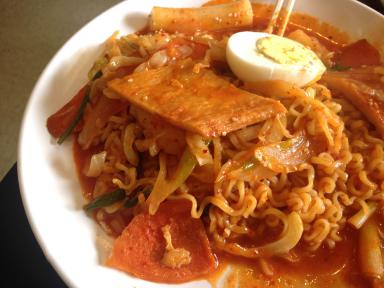Ramen holds its place as one of the most popular Asian food that the west side of the globe has truly appreciated. Actually, ramen is a noodle soup of Japanese origin. In this dish, Chinese-style wheat noodles are dipped in broth flavored with meat (or sometimes, fish). However, ramen has evolved and was adapted by some Asian cultures. For instance, Korean has their own version of what they call, “ramyeon.”
Contrary to many who just labeled ramen as a mere instant dish for late night cravings, there is also the traditional fresh kind that had started it all. While the instant kind of ramen merely needs a cup of hot water (depending on the serving size but it’s usually one cup), the fresh one is accompanied with hot broth and is normally cooked with the use of fresh ingredients.
Even if you’re an individual who is partial to either instant or fresh, here’s a list of Korean ramen (or ramyeon) noodles you can taste—and perhaps—fall in love with.
- Rabokki – This dish is actually a mixture of Korea’s two primary dishes: ramen and dukboki (a spicy rice cake soup).

- Budaechigae (Korean Army Base Stew) – Created during the Korean War when everyone is suffering because of famine. Many Koreans begged for left-over meats in U.S. Military bases to make stew from those. Hence, the name budaechigae (Budae= military base; chigae= stew) was made. Since then, budaechigae has been reinvented into many versions.

- Ramen Corn Chowder– This is an easy-cook recipe that requires few ingredients such as creamed corn, corn kernels, ginger, curry powder and milk. Creamy-licious!

- Tossed Ramen Noodles with Kimchi– as the name suggests, this ramen dished is coupled with the famous kimchi and some good toppings of your choice.

Vegetarian Ramen Noodle Curry– highly recommended for health-conscious vegetarians. This one is a perfect mixture of the Indian spice and Korean noodles
